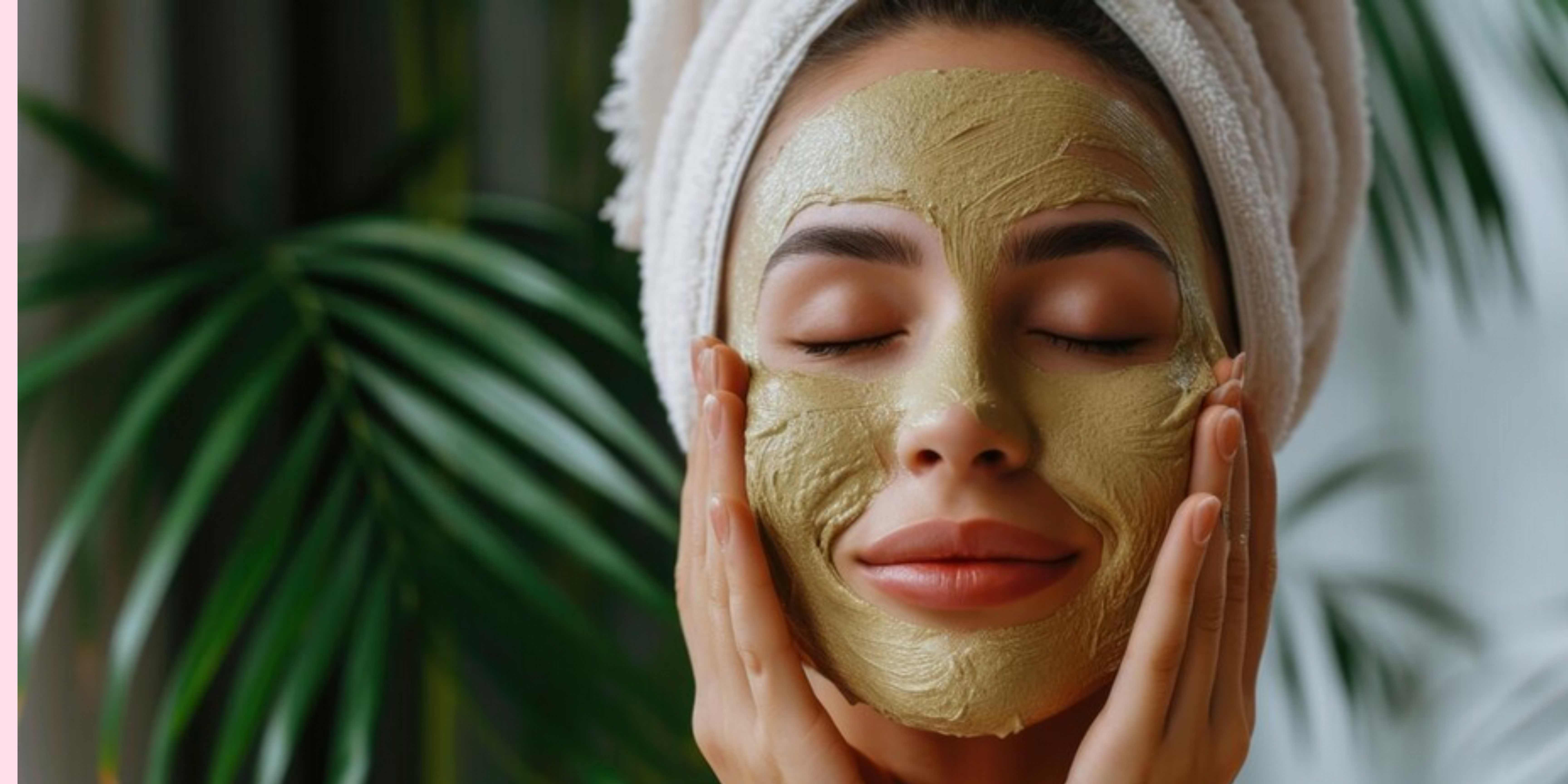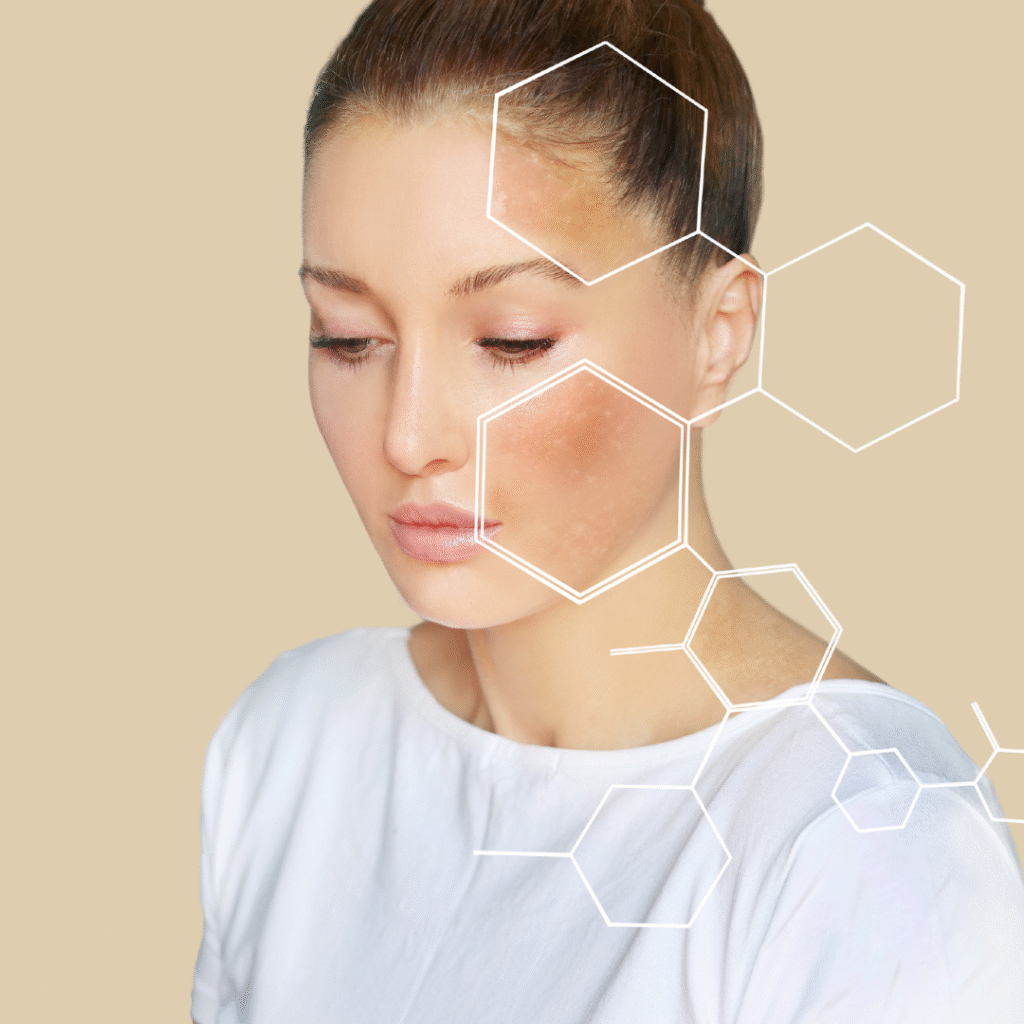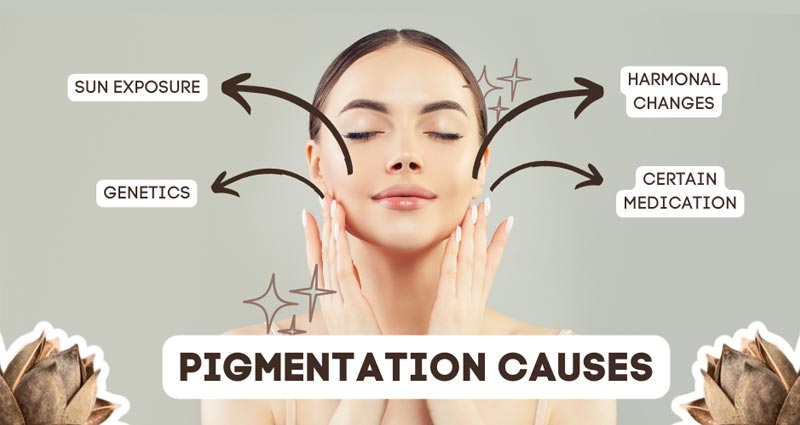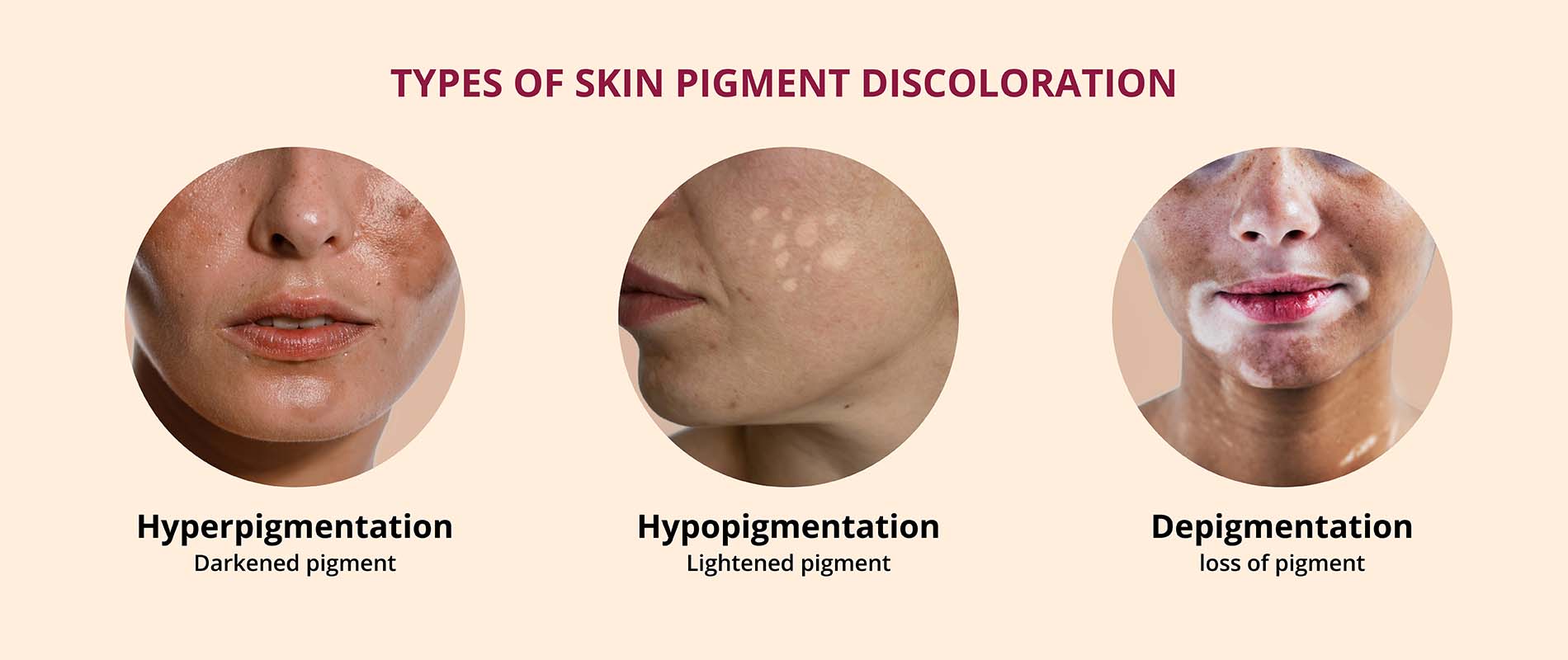
If you’re struggling with dark spots, uneven tone, or dull skin, Ayurvedic treatment for pigmentation on the face offers a natural and effective solution. Rooted in ancient Indian medicine, Ayurvedic treatment for pigmentation on the face focuses on detoxifying the body and balancing internal doshas to restore your skin’s glow. These holistic remedies also help in long-term relief from stubborn discoloration. One of the most trusted approaches is Ayurvedic treatment for hyperpigmentation on face, using herbal ingredients like manjistha, aloe vera, and turmeric. For daily care, choosing the best Ayurvedic cream for pigmentation is Foam Face Wash – Gentle Ayurvedic Care for Clear, Fresh Skin can make a big difference—especially when it contains natural extracts known to reduce melanin buildup. Many users have reported excellent results with the best Ayurvedic cream for hyperpigmentation, which nourishes the skin while correcting dark patches. So, if you want visible improvement without chemicals, go for an authentic Ayurvedic treatment for hyperpigmentation on face and regain your natural glow the safe way.
How to Remove Facial Pigmentation Naturally with Ayurveda
Facial pigmentation is a widespread skin concern that can impact individuals across all age groups. Factors like sun exposure, hormonal changes, and inflammation often lead to uneven skin tone and dark spots. Fortunately, Ayurvedic remedies for facial pigmentation offer a natural and effective way to regain clear skin and boost self-confidence. Ayurveda focuses on treating skin concerns at their source with the help of natural herbs, therapeutic oils, and internal detox methods. In this guide, you’ll explore how Ayurvedic treatment for hyperpigmentation on face works and how to apply it easily at home. Plus, we’ll share tips on choosing the best Ayurvedic cream for hyperpigmentation and how to identify the best Ayurvedic cream for pigmentation to enhance your skin’s glow naturally and safely.

🌿 Understanding Pigmentation and Hyperpigmentation
Pigmentation occurs when melanin production increases in certain areas of your skin, causing dark patches or uneven tone. Hyperpigmentation is the more severe form, often triggered by long-term sun exposure, acne scars, or hormonal imbalances. According to Ayurveda, this condition is a result of an imbalance in Pitta dosha, which governs heat and metabolism in the body.
🪔 Ayurvedic Treatment for Pigmentation on Face: The Natural Approach

The Ayurvedic treatment for pigmentation on face focuses on balancing internal energies and cleansing the body of toxins (ama). Unlike chemical peels or synthetic creams, Ayurveda uses natural herbs, oils, and therapies to fade dark spots and heal the skin from within.
✅ 1. Herbal Face Packs
Ingredients like Manjistha, Turmeric, Sandalwood, and Aloe Vera are widely used in the Ayurvedic treatment for hyperpigmentation on face. These herbs help detoxify the skin and promote cell regeneration.
✅ 2. Internal Detox (Panchakarma)
A series of detox therapies like Virechana (therapeutic purgation) helps remove excess Pitta and toxins from the liver and skin, addressing the root cause of pigmentation.
✅ 3. Cooling Diet and Lifestyle
Ayurveda recommends a Pitta-balancing diet: avoid spicy, fried foods and eat cooling foods like cucumber, coconut water, and leafy greens. Adequate sleep, stress management, and hydration also support the Ayurvedic treatment for pigmentation on face.
What Are the Main Causes of Skin Pigmentation?

kin pigmentation is a common concern that affects people of all skin types and ages. It occurs when the skin produces excess melanin—the pigment responsible for skin color—often triggered by factors like prolonged sun exposure, hormonal changes (such as during pregnancy or menopause), post-inflammatory responses from acne or injury, certain medications, and even stress. These underlying issues lead to conditions like melasma, age spots, and uneven skin tone. To treat these concerns holistically, many people are turning to Ayurvedic treatment for pigmentation on face, which focuses on balancing the body’s internal energies (doshas), detoxifying the blood, and nourishing the skin from within. Unlike chemical-based solutions that offer temporary results, Ayurvedic treatment for hyperpigmentation on face uses natural herbs like manjistha (a blood purifier), licorice (a skin brightener), turmeric (an anti-inflammatory), and saffron (known for its radiance-boosting properties). These ingredients not only lighten dark spots but also help prevent future pigmentation issues by promoting healthy, balanced skin. For external application, the best Ayurvedic cream for hyperpigmentation often contains a synergistic blend of these herbal ingredients in a base of healing oils like coconut, sesame, or almond oil. Similarly, the best Ayurvedic cream for pigmentation works to fade discoloration while moisturizing and protecting the skin barrier. Regular use of these Ayurvedic solutions, combined with proper lifestyle habits and sun protection, can naturally restore an even-toned, radiant complexion without side effects.1
Understanding the Causes of Skin Pigmentation
Skin pigmentation happens when melanin—the natural pigment that gives your skin its color—is produced in excess, often leading to dark patches, uneven tone, and spots on the face. While pigmentation isn’t harmful, it can affect your confidence and overall appearance. There are several causes behind this skin concern, ranging from environmental exposure to internal imbalances. Unlike chemical treatments that only offer surface-level results, Ayurvedic treatment for pigmentation on face focuses on healing the root causes through body detoxification, skin nourishment, and hormonal balance. By using herbs like turmeric, manjistha, licorice, and saffron, Ayurvedic treatment for hyperpigmentation on face helps reduce discoloration and promote a healthy, even complexion. When paired with topical products like the best Ayurvedic cream for hyperpigmentation or the best Ayurvedic cream for pigmentation, which are made with herbal extracts and natural oils, this holistic approach helps you achieve glowing, balanced skin without harsh side effects.

10 In-Depth Causes of Skin Pigmentation
Sunlight and UV Damage
Regular exposure to the sun without proper protection is one of the leading causes of pigmentation. UV rays stimulate your skin cells to produce more melanin, which can accumulate and cause tanning, freckles, and sunspots—especially on the face. Ayurvedic herbs like lodhra and sandalwood help soothe sun damage and reduce melanin buildup naturally.
Hormonal Shifts and Imbalances
Changes in hormones—often due to pregnancy, thyroid issues, or contraceptive use—can cause stubborn pigmentation such as melasma. Ayurveda treats this by balancing the body’s hormonal system through internal herbs like shatavari and external care using the best Ayurvedic cream for pigmentation enriched with natural hormone-regulating botanicals.
Skin Inflammation or Injury
After healing from acne, rashes, or cuts, your skin may leave behind dark spots known as post-inflammatory hyperpigmentation. Instead of bleaching creams, Ayurvedic treatment for hyperpigmentation on face uses anti-inflammatory herbs like neem and turmeric to naturally fade marks and soothe irritation over time.
Age-Related Skin Changes
As we age, the skin’s ability to renew itself gradually decreases, leading to dullness and the appearance of pigmentation. Ayurveda suggests rasayana therapy—revitalizing treatments with potent herbs like amalaki and gotu kola—to naturally boost cell regeneration and gently diminish age-related dark spots.
Hereditary Pigmentation
Sometimes, pigmentation is inherited and may appear at an early age. In such cases, Ayurveda focuses on improving internal body functions and blood purification using herbs like manjistha and triphala, along with regular application of the best Ayurvedic cream for hyperpigmentation for long-term care.
Incorrect Skincare Practices
Overuse of strong exfoliants, chemical peels, or steroid-based creams can damage your skin barrier, leading to sensitivity and pigmentation. Replacing synthetic products with Ayurvedic treatment for pigmentation on face helps restore balance through gentle, nourishing ingredients that protect and heal the skin.
Medication Side Effects
Certain medicines, such as antibiotics or hormonal therapies, can trigger pigmentation as a side effect. Ayurveda helps counter this by detoxifying the body with herbs like guduchi and tulsi, while topical creams made with saffron and almond oil help even out the skin tone naturally.
Environmental Toxins and Pollution
Pollution and environmental toxins can clog your pores, oxidize your skin, and lead to dullness and pigmentation. Ayurvedic face masks using ingredients like multani mitti, rose petals, and activated charcoals can help remove impurities while calming and refreshing the skin.
Mental Stress and Sleep Deprivation
Chronic stress and lack of restful sleep can disrupt hormone production and increase cortisol levels, leading to pigmentation. Ayurveda treats this with calming herbs like brahmi and jatamansi to support mental peace and promote better skin health. When combined with the best Ayurvedic cream for pigmentation, the results are visible both inside and out.
Poor Diet and Nutrient Deficiency
An unbalanced diet lacking in key nutrients like Vitamin B12, iron, and antioxidants can weaken your skin’s natural defense and cause discoloration. Ayurveda emphasizes a wholesome, sattvic diet and herbal support to detoxify the liver, improve digestion, and nourish the skin, resulting in naturally glowing and even-toned skin.
Types of Pigmentation and Their Ayurvedic Treatments

Pigmentation is a common skin issue where dark patches or spots appear on the skin, especially the face. It can make your skin look uneven and dull. There are many causes of pigmentation, such as sun exposure, acne scars, hormonal imbalance, ageing, or even stress. Fortunately, Ayurveda provides a natural and gentle solution to deal with this problem. Ayurvedic treatment for pigmentation on face focuses on healing from within by balancing the doshas and improving blood purification.
Let’s take a closer look at the main types of pigmentation and how Ayurvedic treatment for hyperpigmentation on face can help you achieve glowing, healthy skin.
1. Melasma
Melasma appears as brown or grey patches on the cheeks, forehead, or upper lip. It’s often triggered by hormonal changes such as pregnancy, birth control pills, or thyroid problems.
Ayurvedic View: In Ayurveda, melasma is linked to Pitta imbalance and heat buildup in the blood. To treat it, herbs like Manjistha, Lodhra, and Amla are used to cool the body and purify the blood.
Treatment Tip: Applying face masks made from sandalwood and rose water can help calm the skin and lighten melasma naturally.
2. Post-Inflammatory Hyperpigmentation (PIH)
This form of pigmentation appears after an injury or acne heals, leaving behind a dark spot. It is especially common in darker skin tones.
Ayurvedic Approach: Ayurvedic treatment for hyperpigmentation on face includes the use of healing herbs like Neem, Turmeric, and Aloe Vera. These ingredients help reduce inflammation, fight bacteria, and improve skin regeneration.
Treatment Tip: Daily use of turmeric paste or neem-infused oil can gradually fade these spots.
3. Sun Spots
Also known as age spots or liver spots, these are caused by long-term sun exposure and appear on the face, neck, or arms. They are more common as people age.
Ayurvedic Solution: Cooling and hydrating herbs like Chandan (Sandalwood), Aloe Vera, and Licorice (Yashtimadhu) are recommended to soothe sun-damaged skin.
Treatment Tip: Apply sandalwood paste mixed with rose water for a natural and effective remedy.
4. Freckles
Freckles are tiny brown spots that occur mostly in people with lighter skin and can become more visible with sun exposure.
Ayurvedic Insight: These are considered a result of sun heat and excess Pitta. Herbs like Tulsi, Lemon, and Multani Mitti are used to balance the skin’s tone and reduce these spots.
Treatment Tip: Use a face pack of multani mitti and aloe vera gel to lighten freckles gently.
5. Age Spots
With ageing, skin starts to develop brown patches due to reduced collagen and sun exposure. These are harmless but often unwanted.
Ayurvedic Herbs for Age Spots: Ashwagandha, Brahmi, and Gotu Kola are rich in antioxidants and help in skin cell repair and rejuvenation.
Treatment Tip: Apply brahmi oil or ashwagandha-based creams at night for anti-ageing benefits.
Best Ayurvedic Cream for Pigmentation and Hyperpigmentation
If you’re searching for the best Ayurvedic cream for pigmentation or best Ayurvedic cream for hyperpigmentation, consider products made with the following:
1. Kumkumadi Tailam
This is a traditional Ayurvedic oil known for reducing dark spots, pigmentation, and improving overall skin texture. It’s often considered the best Ayurvedic cream for hyperpigmentation when used regularly.
2. Manjistha Cream
Manjistha is known for its blood-purifying qualities. Creams with this ingredient help reduce acne scars, dark spots, and uneven skin tone.
3. Licorice (Yashtimadhu) Cream
Yashtimadhu is a natural skin brightener. It works well in lightening pigmentation and giving the skin an even tone.
4. Neem and Turmeric Cream
Neem detoxifies the skin while turmeric reduces inflammation. Together, they work to prevent acne and the pigmentation that follows.
How Ayurveda Works Wonders on Facial Pigmentation – Complete Guide
Facial pigmentation, whether caused by sun damage, hormonal imbalance, or aging, can deeply affect one’s confidence. Thankfully, Ayurveda offers time-tested, natural solutions to treat these skin concerns from the root. The ayurvedic treatment for pigmentation on face focuses on balancing the body’s doshas—Vata, Pitta, and Kapha—especially Pitta, which is responsible for skin coloration. By using powerful herbal formulations like Ayurveda Foam Face Wash, manjistha, turmeric, and aloe vera, Ayurveda helps detoxify the blood, soothe inflamed skin, and gradually fade dark spots and uneven tone. Regular application of herbal pastes, face oils, and internal detox therapies like Panchakarma brings visible improvements without side effects. When it comes to ayurvedic treatment for hyperpigmentation on face, remedies such as Kumkumadi Tailam, sandalwood powder masks, and amla-infused tonics are particularly effective. Ayurveda not only treats the symptoms but works holistically to restore your skin’s natural radiance and balance from within, making it a truly transformative approach.
Hyperpigmentation Management with Ayurveda: Safe and Natural Techniques

Hyperpigmentation is a common skin concern where certain areas of the face become darker due to excess melanin production. Many people look for chemical treatments to lighten these spots, but Ayurveda provides a safer and more holistic alternative. Ayurvedic treatment for hyperpigmentation on face focuses not just on the external symptoms but also on balancing the internal causes, such as hormonal imbalance, poor digestion, or excessive sun exposure.
1. Ayurvedic Treatment for Hyperpigmentation on Face
Ayurveda considers hyperpigmentation a result of aggravated Pitta dosha. Herbal remedies like sandalwood, turmeric, licorice, and manjistha are traditionally used to cool down excess heat and reduce dark patches. Regular application of herbal pastes, along with detoxifying therapies, helps in restoring natural skin tone.
2. Ayurvedic Treatment for Pigmentation on Face
When discussing ayurvedic treatment for pigmentation on face, lifestyle plays a vital role. A diet rich in antioxidants, proper hydration, and adequate sleep helps the body heal from within. Face packs made from natural herbs like neem, aloe vera, and saffron nourish the skin and minimize uneven pigmentation.
3. Best Ayurvedic Cream for Hyperpigmentation
There are several best Ayurvedic creams for hyperpigmentation that use natural ingredients rather than harsh chemicals. These creams often contain kumkumadi oil, mulethi (licorice), and saffron extracts, which have proven skin-lightening and rejuvenating effects. Consistent use can make the skin brighter and reduce stubborn marks safely.
4. Best Ayurvedic Cream for Pigmentation
Choosing the best Ayurvedic cream for pigmentation depends on your skin type. Look for formulations that combine herbal extracts with moisturizing oils like coconut or almond oil. These creams not only target pigmentation but also maintain skin health by keeping it hydrated and nourished.
